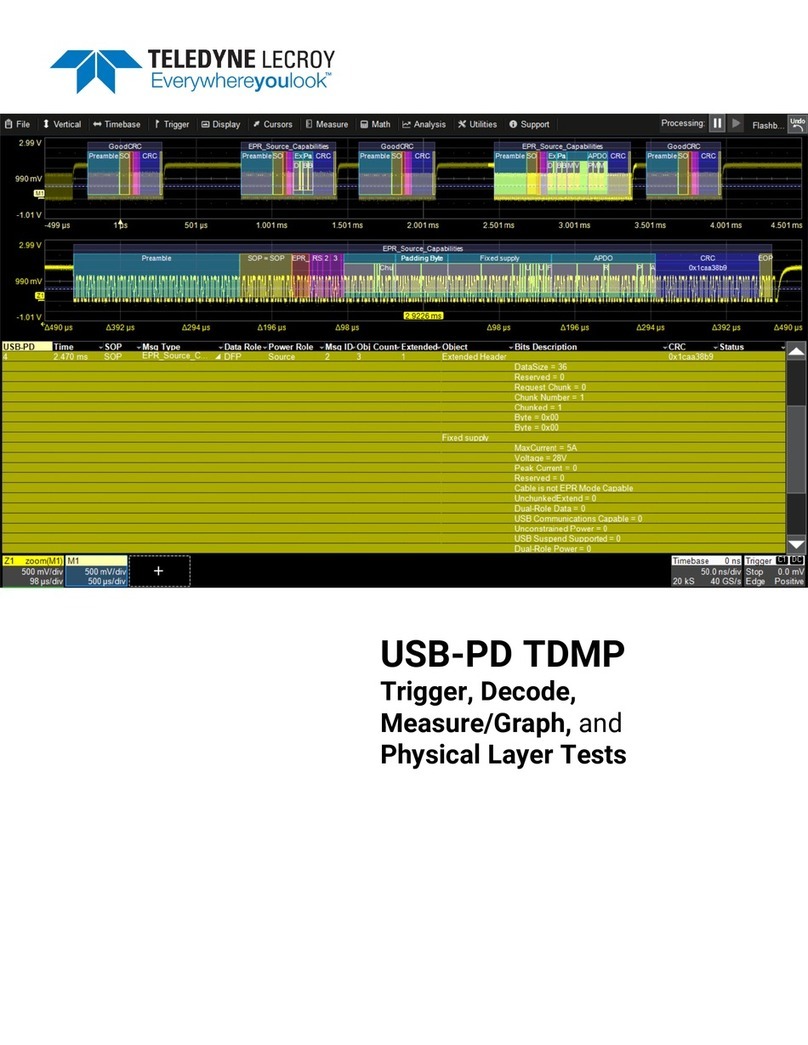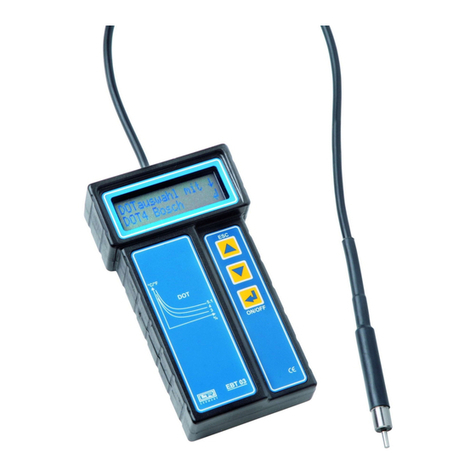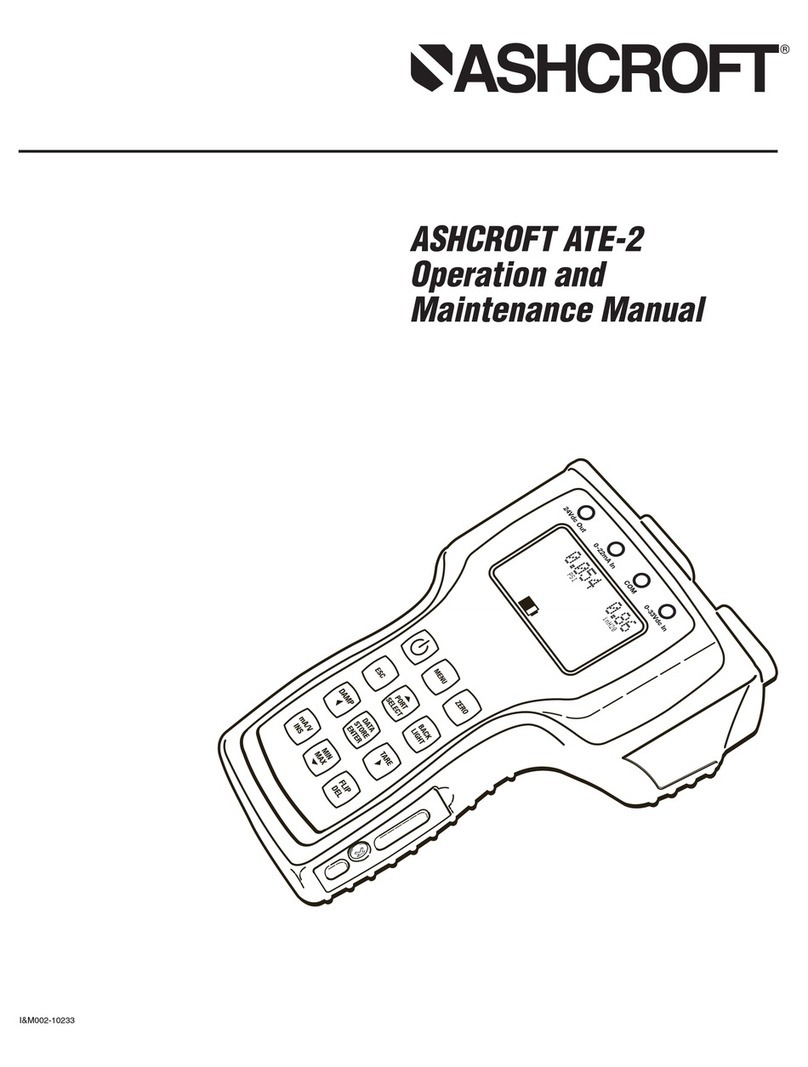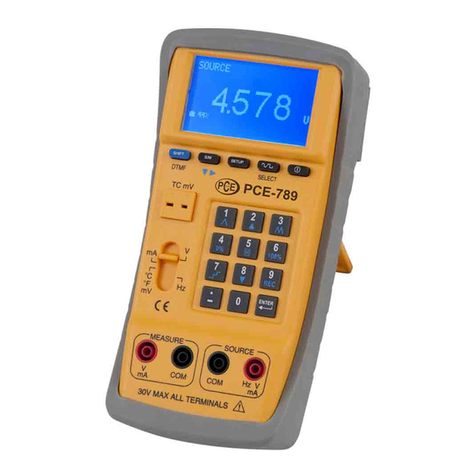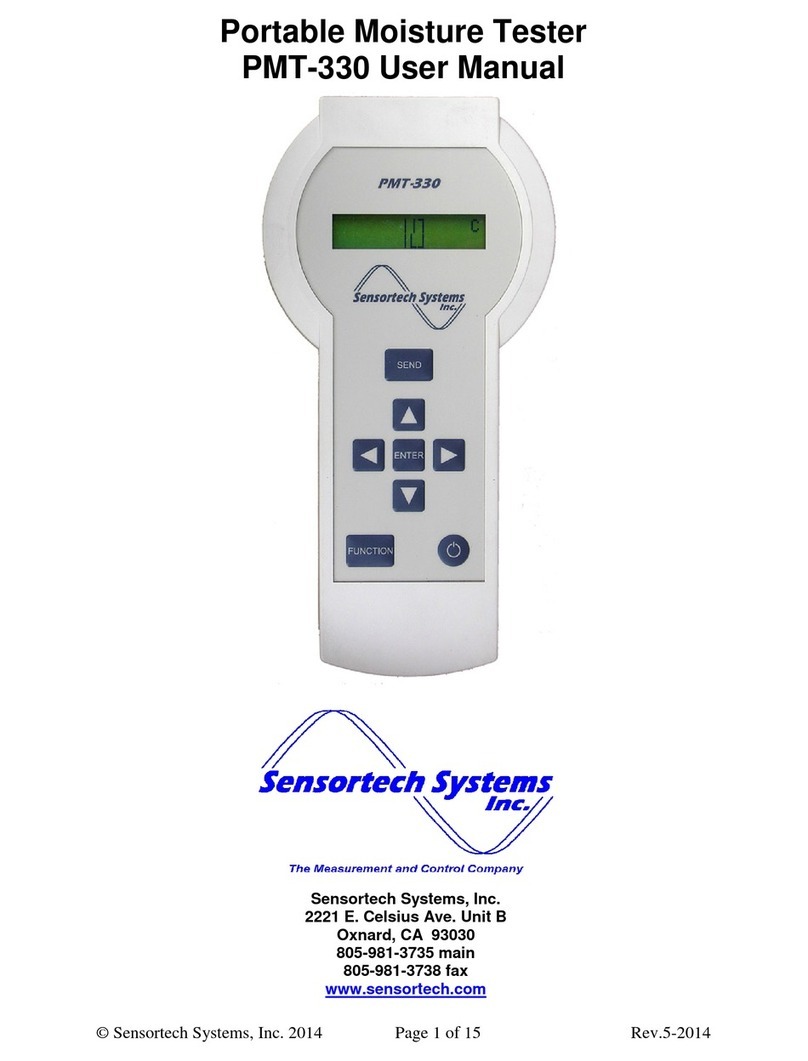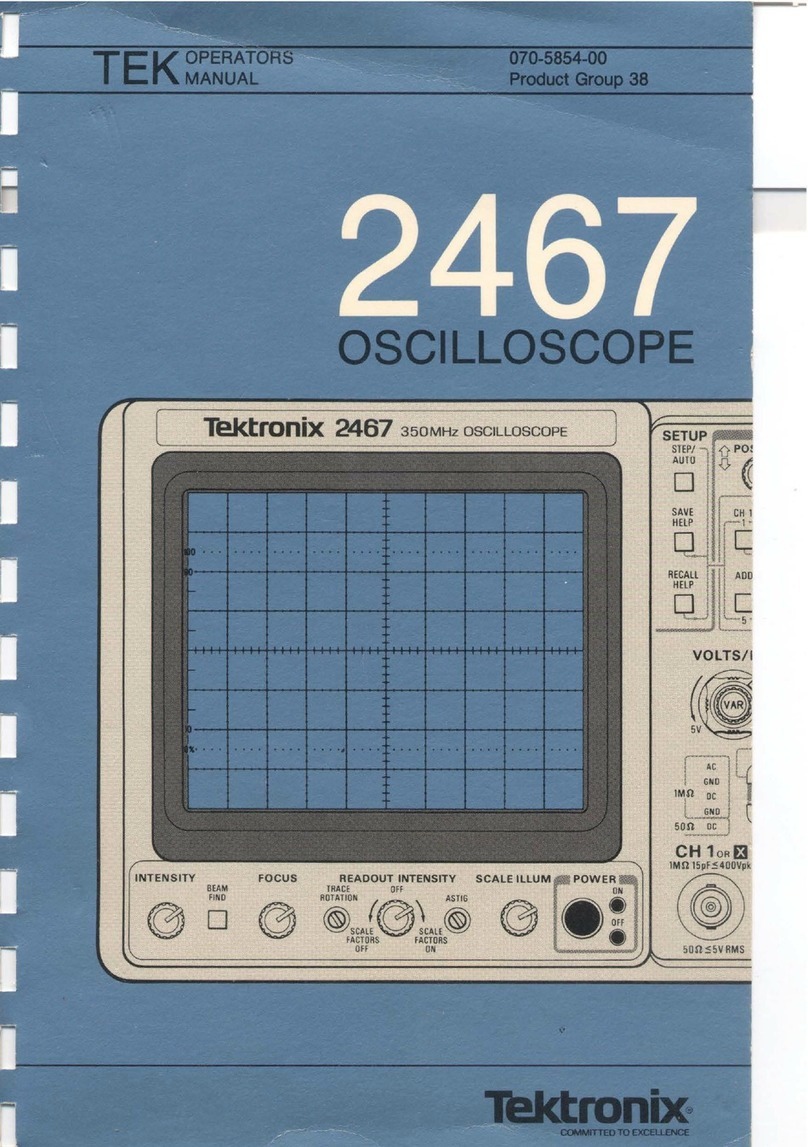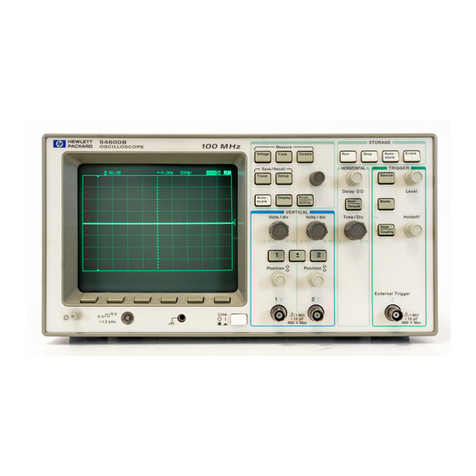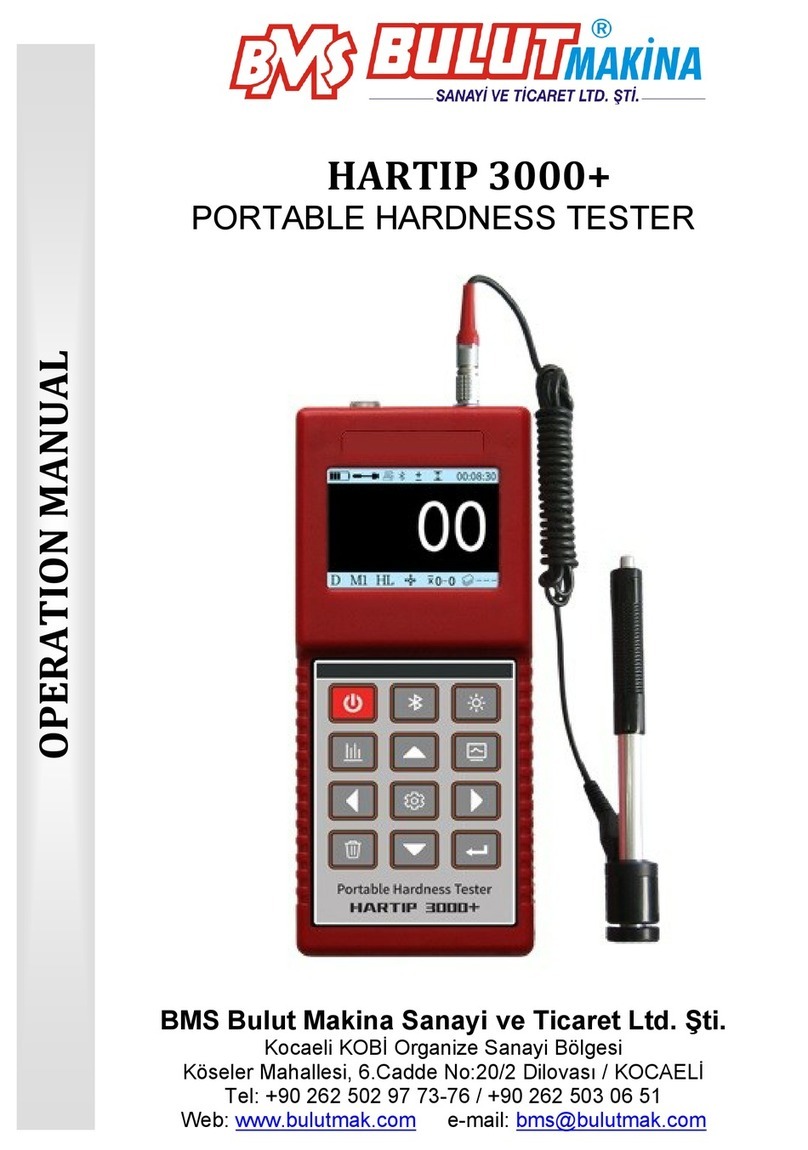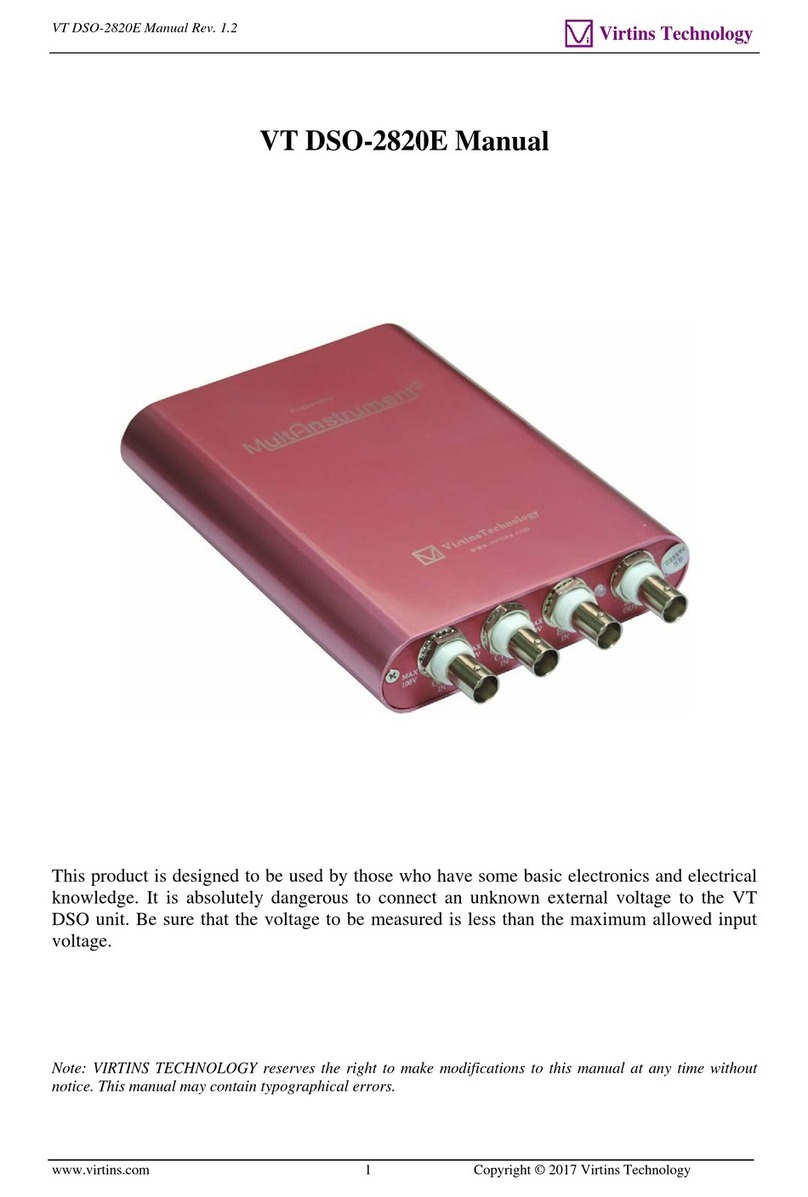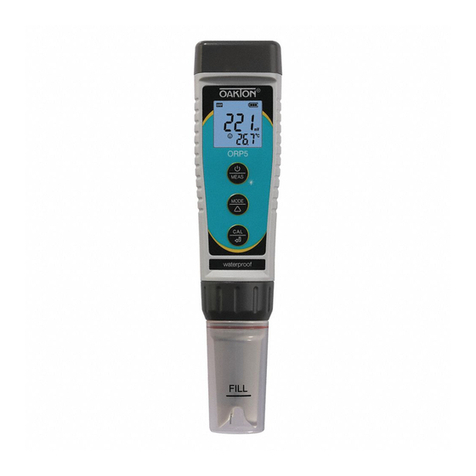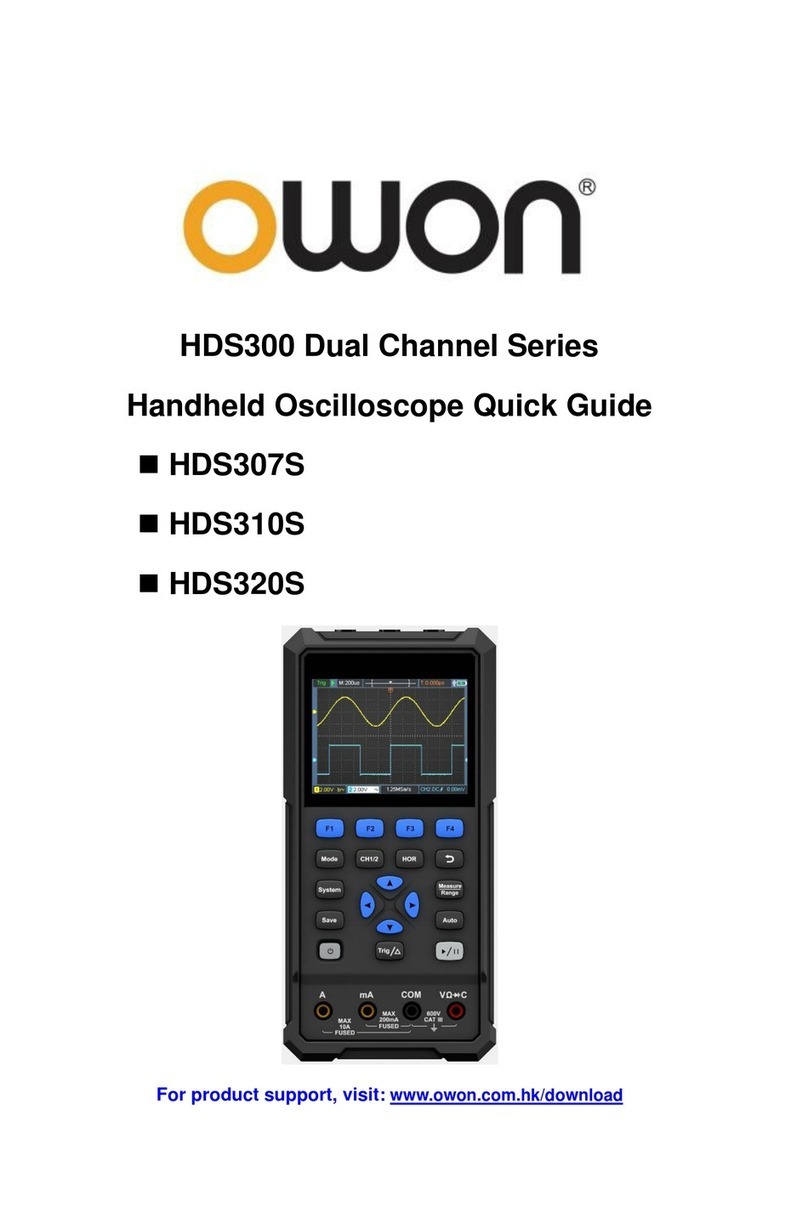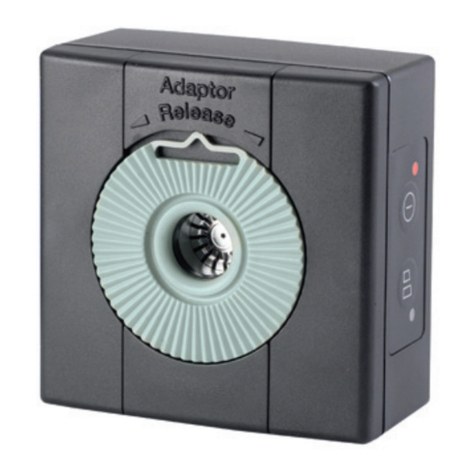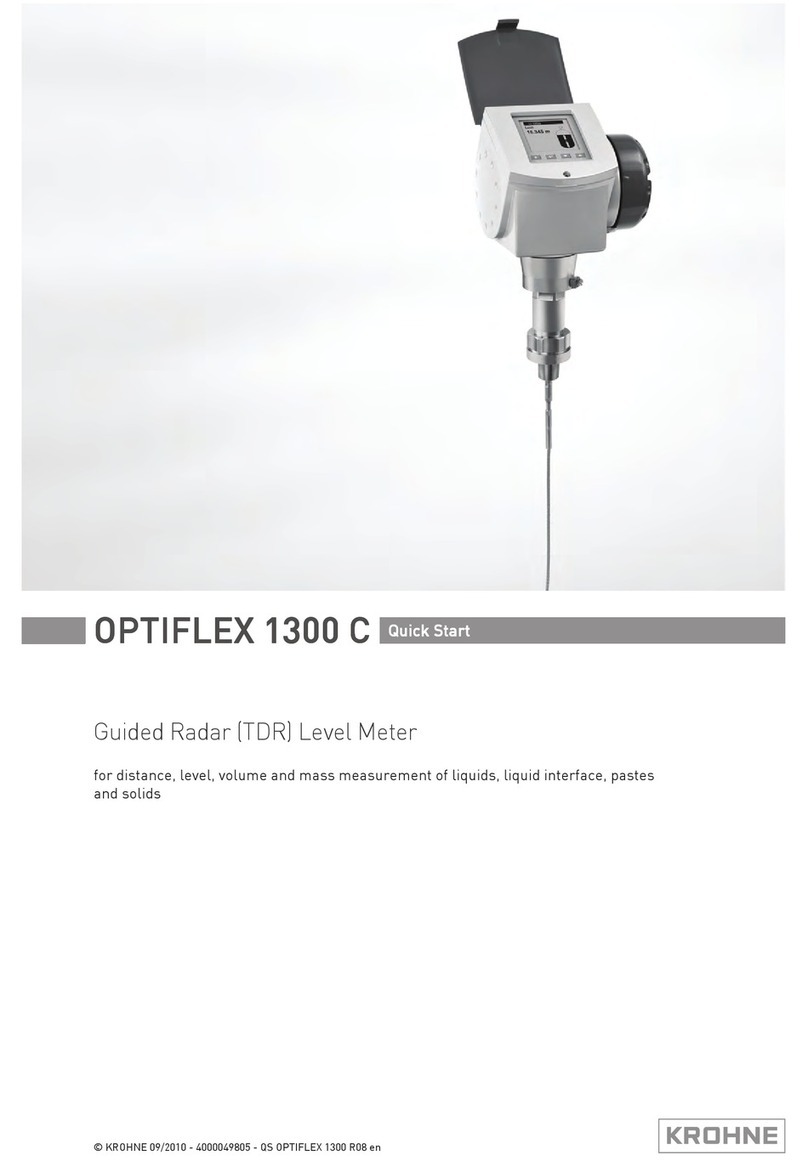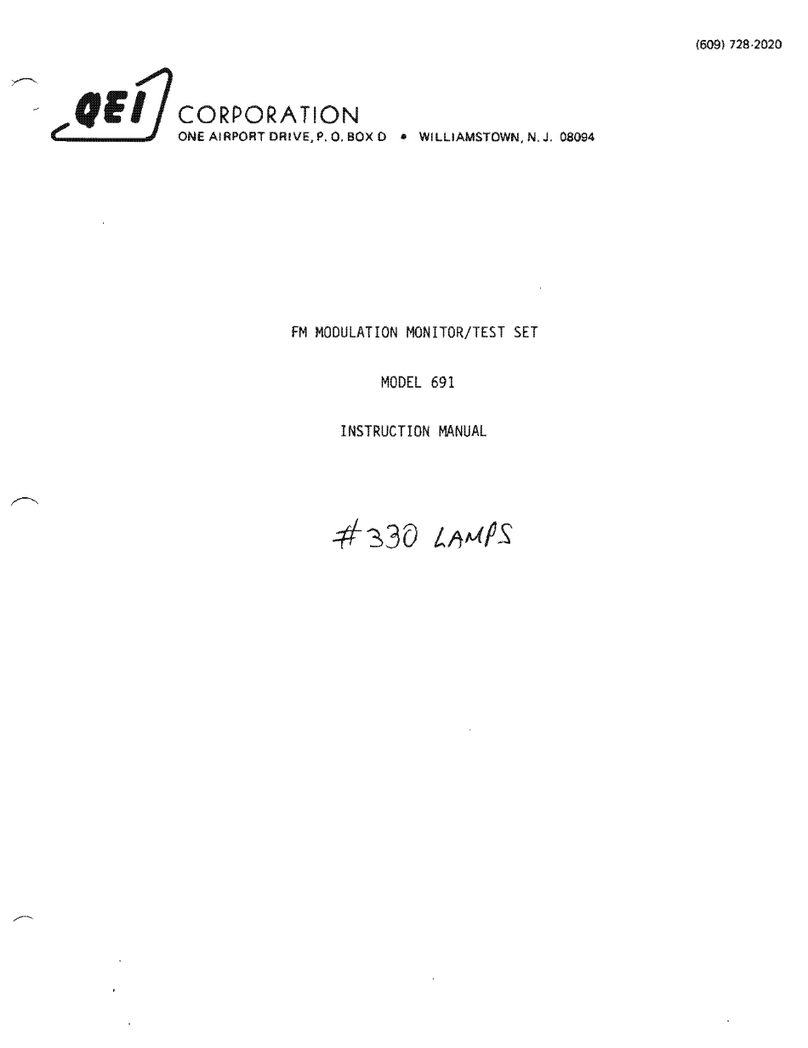DNA HemaVision-4 User manual

1
HemaVisionâ-4;11 www.dna-diagnostic.com Revision 2019.09.19
HemaVisionÒ-4;11
A multiplex RT-PCR screening test for chromosome
translocation t(4;11)(q21;q23)(KMT2A-AFF1) associated with
leukemia
User Manual
for
HemaVisionÒ-4;11, Cat. No. HV03-411
25 tests per kit
TABLE OF CONTENTS
1. PURPOSE OF THE TEST 2
2. PRINCIPLES OF TEST 3
3. KIT COMPONENTS AND STORAGE 4
4. EQUIPMENT AND MATERIALS REQUIRED BUT NOT PROVIDED 5
5. PRECAUTIONS 6
6. PROCEDURE 6
Step 1 cDNA synthesis 7
Step 2 PCR 8
Step 3 Gel electrophoresis PCR 8
7. INTERPRETATION 9
8. GENE ABBREVATIONS ACCORDING TO THE HGNC 10
9. REFERENCES 10

2
HemaVisionâ-4;11 www.dna-diagnostic.com Revision 2019.09.19
1. PURPOSE OF THE TEST (INTENDED USE)
HemaVisionÒ-4;11 is a CE-marked in vitro diagnostic test for qualitative detection of the human
leukemia causing chromosomal translocation t(4;11)(q21;q23)(KMT2A-AFF1). Tests should be
performed and results should be analysed by professionals only. The test is intended for use as an
adjunct to evaluation of Leukemia in conjunction with other clinicopathological factors and is not
intended for stand-alone diagnosis of Leukemia (aid to diagnosis).
The test screens RNA from blood or bone marrow for breakpoints resulting in the exon fusions KMT2A
and AFF1 genes. HemaVisionÒ-4;11 also detects mRNA splice variants for the t(4;11)(q21;q23)(KMT2A-
AFF1) translocation. It is a fast 4-5 hour test. The HemaVisionÒ-4;11 test has sensitivity (>99%) and
specificity (>96%). Limit of detection is 10-8 mg of fusion RNA in a sample of 1 mg total RNA when the
RNA quality is good. This test provides a more detailed description of the exon organization of fusion
genes originating from chromosome translocations.
HemaVisionÒ-4;11 is a qualitative test using total RNA extracted from human whole blood or bone
marrow cells as starting material in the test. The test uses reverse transcription of RNA to cDNA
followed by multiplex PCR (Polymerase Chain Reaction), agarose gel electrophoresis, and
interpretation.
The HemaVisionÒ-4;11 kit contains primers for 25 cDNA reactions, and 25 PCR tests.
The test is for professional use only.
KMT2A (11q23) (NM_ 001197104) AFF1 (4q21) (NM_001166693)
1 2 3 4 5 6 7 8 9 10
11
12
13
14
- 31
1 2 3 4 5 6 7 8 - 21
.
…
…
…
…
…
.
.
. … … … … ..
8 7 KMT2A ex8 - AFF1 ex7 313 bp
8 6 KMT2A ex8 - AFF1 ex6 400 bp
9 7 KMT2A ex9 - AFF1 ex7 445 bp
8 5
KMT2A
ex8
-
AFF1 ex5
445 bp
9 6 KMT2A ex9 - AFF1 ex6 532 bp
10
7 KMT2A ex10 - AFF1 ex7 559 bp
9 5
KMT2A
ex9
-
AFF1 ex5
577 bp
10
6 KMT2A ex10 - AFF1 ex6 646 bp
10
5 KMT2A ex10 - AFF1 ex5 691 bp
Figure 1 illustrates principle for the RT-PCR reactions of the HemaVisionÒ-4;11 kit. The tests identifies
chromosomes, fusion genes and exons at the breakpoint. Only intron breakpoints for fusion genes
maintaining the original translational reading frame are shown.
Blue arrow: PCR primers. Grey arrow: cDNA primer. Black arrow: Breakpoints. One, two or three dots
indicate translational reading frame at end or beginning of exon.

3
HemaVisionâ-4;11 www.dna-diagnostic.com Revision 2019.09.19
2. PRINCIPLE OF TEST
RNA is template for synthesis of cDNA in a reaction using Reverse Transcriptase (RT) and specific cDNA
primers. The cDNA is template for PCR amplifications using a hot start Taq DNA Polymerase and
specific PCR primers. Many fusion genes have several breakpoints. Therefore, the PCR primers are
designed to bind at positions enabling screening for all these breakpoints as illustrated in figure 1. PCR
products are visualized by agarose gel electrophoresis. A Reaction Control amplicon of 983 bp is also
detected in all reactions from the constitutively expressed Biotinidase (BTD) gene. This is a control for
the quality of RNA and functionality of the test. The workflow of the test and an example of test results
are shown in figure 2.
Total RNA
cDNA Synthesis
PCR
Interpretation
Figure 2.Workflow and results from a test with HemaVisionÒ-4;11, Cat. No. HV03-411.
Samples: -RNA (negative control), Patient 1, Patient 2.
Result: 983 bp Reaction Control amplicon present in all lanes except the negative control (-RNA).
Sample “2” positive for translocation specific amplicon of 400 bp.
Conclusion: From the Interpretation Table 4 it can be seen patient “2” has a translocation at
t(4;11)(q21;q23)(KMT2Aex8-AFF1ex6).
RNA Preparation
Total RNA is prepared from whole blood, cell lines, or bone marrow cells with the QIAampÒRNA Blood
Mini Kit (Qiagen Cat. No. 52304).
cDNA Synthesis
cDNA is synthesized in a reaction containing the isolated RNA, cDNA Mix (primers) from the
HemaVisionÒ-4;11 kit Cat No. HV03-411 and Reverse Transcriptase, 5x Buffer, DTT, and dNTP from the
reagent module HemaVision®kit Cat. No. HV06-RMP or Cat. No. HV04-RM.
PCR
The cDNA is used as a template for one pair of translocation specific primers and one pair of reaction
control primers. The PCR reaction use Primer Mix PCR from the HemaVisionÒ-4;11 (Cat. No. HV03-411)
-RNA 1 2 m
1000
900
800
700
600
500
400
300
200
100
Reaction control amplicon 983 bp
Translocation specific amplicon 400 bp

4
HemaVisionâ-4;11 www.dna-diagnostic.com Revision 2019.09.19
and HemaVision DNA Polymerase, 10xbuffer, and dNTP from HemaVisionÒ-RMP kit (Cat. No. HV06-
RMP). The tube Primer Mix PCR contains one pair of translocation specific primers and one pair of
reaction control primers specific for the housekeeping gene Biotinidase (BTD). The PCR products are
analyzed by agarose gel electrophoresis. The 983 bp reaction control band is a positive control for
using intact RNA and functionality of the RT-PCR reactions. A translocation specific band show the test
is positive for a t(4;11)(q21;q23)(KMT2A-AFF1) translocation. The breakpoint is determined from the
Interpretation Table 4.
Interpretation of results
A sample is positive for a translocation when a translocation specific band and reaction control
amplicons are present. Note, the reaction control band can be weak in reactions with a strong
translocation specific band. The breakpoint is identified by the molecular size of the translocation
specific amplicon using Interpretation Table 4. More than one translocation specific band shows
presence of alternative spliced mRNA from the fusion gene.
Figure 2 shows workflow for testing blood or bone marrow samples with HemaVisionÒ-4;11. In this
example, sample “2” is positive for a translocation specific band of 400 bp. The Reaction Control
amplicon of 983 bp is present in both the translocation positive sample “2” and in the translocation
negative sample “1” showing the RNA was intact and the RT-PCR reactions were functional. The
negative control sample “-RNA” contains no amplicons showing the reagents has not been
contaminated with positive material. From Interpretation Table 4 it can be concluded, the patient “2”
has a t(4;11)(q21;q23)(KMT2Aex8-AFF1ex6) translocation and patient “1” has no
t(4;11)(q21;q23)(KMT2A-AFF1) translocation.
3. KIT COMPONENTS AND STORAGE
The HemaVisionÒ-4;11 kit Cat. No. HV03-411 contains a box with one white capped tube containing
Primer Mix cDNA, one blue capped tube with Primer Mix PCR and a User Manual for instruction. The kit
is shipped at -20°C or below and the kit must be stored at -20°C by the customer. While performing the
test always keep test components on ice (0°C). Each kit contains sufficient primer mixes for 25 cDNA
reactions and 25 PCR reactions.
NOTE: It is essential for functionality of the HemaVisionÒ-4;11 kit also to obtain and use the reagents
provided in HemaVisionÒ-RMP kit, Cat. No. HV06-RMP containing: 20 µL MMLV-Reverse Transcriptase,
100 µL 5x cDNA buffer, 50 µL DTT, 100 µL dNTP, 45 µL HemaVision DNA Polymerase, 300 µL 10x PCR
buffer.
Figure 3 shows content of HemaVisionÒ-4;11
kit, Cat. No. HV03-411.
1 x 110 µL Primer Mix cDNA (white cap)
1 x 155 µL Primer Mix PCR (blue caps)
HemaVisionÒ-4;11
Primer Mix
cDNA
HemaVisionÒ-4;11
Primer Mix
PCR

5
HemaVisionâ-4;11 www.dna-diagnostic.com Revision 2019.09.19
4. EQUIPMENT AND MATERIALS REQUIRED BUT NOT PROVIDED
RNA extraction:
QIAampÒRNA Blood Mini Kit from Qiagen Cat. No. 52304.
Reagent Module:
HemaVisionÒ-RMP kit Cat. No. HV06-RMP contains: MMLV-RT; 5x cDNA buffer; DTT; dNTP,
HemaVision DNA Polymerase, 10x PCR buffer. Use two HV06-RMP kits together with each
HemaVisionÒ-4;11 kit.
Instead of using HemaVisionÒ-RMP use HemaVisionÒ-RM Cat. No. HV04-RM containing MMLV-RT; 5x
cDNA buffer; DTT; dNTP. HotStarTaq DNA Polymerase 5U/uL is from Qiagen.
Master Mix room – No templates in this room:
Micropipettes, 0.5-10 µL, 20-200 µL,
HemaVisionÒkit Cat. No. HV06-RMP containing: MMLV-RT; 5x cDNA buffer; DTT; dNTP, HemaVision
DNA Polymerase, 10x PCR buffer
Aerosol barrier micropipette tips, 0.5-10 µL, and 20-200 µL
Micro centrifuge
Ice bath
RNase free tubes
Disposable gloves
RNase free water
-20oC freezer for storage of kits (HemaVisionÒ-4;11 and HemaVisionÒ-RMP)
cDNA room:
Micropipettes, 0.5-10 µL, 20-200 µL
Aerosol barrier micropipette tips, 0.5-10 µL, and 20-200 µL
Micro centrifuge
Heating block/Water bath
Ice bath
RNase free tubes
Disposable gloves
RNase free water
-80oC freezer for storage of RNA samples
PCR room:
Micropipettes, 0.5-10 µL, 20-200 µL
Aerosol barrier micropipette tips, 0.5-10 µL, and 20-200 µL
Micro centrifuge
Thermal Cycler
Ice bath
PCR tubes (0.1 mL or 0.2 mL) and lids
Disposable gloves
Gel electrophoresis room:
Micropipettes, 0.5-10 µL
Aerosol barrier micropipette tips, 0.5-10 µL
Micro centrifuge
Equipment for agarose gel electrophoresis
Disposable gloves
Molecular size marker (e.g. 100 bp ladder)

6
HemaVisionâ-4;11 www.dna-diagnostic.com Revision 2019.09.19
5. PRECAUTIONS
General precautions
·The quality and concentration of the RNA sample greatly affects the results of this test. To
minimize the risk of degradation by ribonucleases, we strongly recommend purification of total
RNA immediately after blood or bone marrow extraction. Optionally, mononuclear cells can be
purified prior to RNA extraction using Ficoll Hypaque. Do not freeze Ficoll purified cells without
adding a denaturing solution [e.g. containing guanidinium isothiocyanate (GTC)] immediately after
isolation and before freezing.
·Use blood from venipuncture collected into a tube containing EDTA. Alternatively, use bone
marrow collected into a tube containing EDTA. Do not freeze the blood or bone marrow sample.
·Alternatively, blood samples can be stabilized in PAXgene Blood RNA tubes, Qiagen cat. no.
762165 and bone marrow samples can be stabilized in PAXgene Bone marrow RNA tubes, Qiagen
cat. no. 764114.
·Do NOT use Heparin for stabilization of blood samples.
·Always store cell samples and aqueous RNA solutions at -80°C. Even an overnight storage at -20°C
may result in RNA degradation.
·When working with RNA always use gloves, as hands are a major source of ribonuclease
contamination.
·The integrity and purity of RNA is important for the efficiency of the cDNA synthesis and thus
detection of translocations. The quality of RNA can be checked by OD 260/280 nm measurements,
agarose gel electrophoresis, or using RIN number from the Agilent Bioanalyzer.
·For more guidance on specimen collection, RNA isolation and storage please refer to “ISO
20186:2019 Molecular in vitro diagnostic examinations – Specifications for pre-examination
processes for venous whole blood – Part 1: isolated cellular RNA” and CLSI guidance MM13-A
“Collection, Transport, Preparation and Storage of Specimens for Molecular Methods; Approved
guideline.
·RT-qPCR is a very sensitive technique. Therefore, precautions must be taken to avoid false positive
results caused by contamination with RNA, cDNA or PCR products from other samples.
·Dedicate four separate rooms/areas to the following activities:
oRNA extraction
ocDNA synthesis
oAddition of cDNA to qPCR master mix
oqPCR
·A set of micropipettes, aerosol barrier pipette tips, disposable gloves and clean lab coats should be
kept in each of the four rooms. The work must be organized so that mixes and reaction products
only moves in the direction from 1-4. NEVER move mixes or reaction products in the opposite
direction.
·Laboratory workbenches, pipettes, and lab coats must be cleaned on a regular basis.
·Use of aerosol barrier pipette tips is highly recommended during the entire procedure. It is
essential to change gloves very often when handling tubes containing RNA or cDNA. To minimize
contamination avoid opening PCR tubes after amplification as they contain very high copy
numbers of PCR amplicons.
·The detection of translocations can be checked with HemaVision-7 Positive Controls, catalogue no
HV05-7PC
·For more general guidance on best practice in qPCR testing please refer to the CLSI guidance
document MM01: Molecular Methods for Clinical Genetics and Oncology Testing, 3rd Edition
Safety
·Read and understand the procedure before starting.
·Normal laboratory aseptic technique should be followed at all times.
·Treat each sample as if it is infectious.
·Wear eye protection and disposable gloves during all steps of the assay.

7
HemaVisionâ-4;11 www.dna-diagnostic.com Revision 2019.09.19
·The products can be discarded as normal laboratory waste
·Check the safety data sheet for the product on our website for further information or ask for a
copy of it.
6. PROCEDURE
Procedural notes
·Store all test components as described in section 3: Kit Components and Storage.
·Do not mix reagents from different lots.
·Careful pipetting technique is essential for accurate results.
·This protocol is optimized with enzymes and buffers from HemaVisionÒkit Cat. No. HV06-RMP.
·This protocol is optimized for the ABI (Perkin Elmer) GeneAmp 9600/9700 thermal cycler. Use of
another thermal cycler may require optimization by the user.
·As a positive control for RNA quality and functionality of each RT-PCR reaction a 983 bp fragment
of the housekeeping gene biotinidase must be present in all lanes except in reactions positive for
a translocation specific amplicon where it may be weak or missing.
·As a negative control, make the cDNA reaction without RNA template.
RNA preparation
·Due to the inherent instability of RNA use patient samples as fresh as possible. Within 24 hours of
sample collection, extract total RNA.
·For RNA preparation from whole blood or mononuclear cells isolated with Ficoll Hypaque, we
recommend the use of the QIAamp® RNA Blood Mini Kit (Qiagen Cat. No. 52304). The yield of RNA
from 1 x107mononuclear cells from blood is approximately 5-10 mg.
·For blood collected in PAXgene tubes, RNA can be extracted with the PAXgene Blood RNA kit,
Qiagen cat. no. 762174.
·For bone marrow collected in PAXgene tubes, RNA can be extracted with PAXgene Bone marrow
RNA kit, Qiagen cat. no. 764133.
·Measure the RNA concentration by reading the optical density at 260 nm. An absorbance of 1 unit
at 260 nm corresponds to 40 mg of RNA per ml (A260 = 1 = 40 mg/ml). Adjust the concentration of
RNA to 0.1 mg/µL with RNase free water.
·Prepare at least two aliquots of each RNA sample in RNAse free tubes. Add 10 µL of 0.1 mg/µL
RNA to each tube. Store RNA aliquots at –80oC if not used immediately for cDNA synthesis.
cDNA synthesis and PCR
Step 1 cDNA Synthesis
1.1 In the Master Mix room prepare cDNA Synthesis Mix according to Table 1 using reagents from
HemaVisionÒ-RMP reagent module Cat. No. HV06-RMP.
Table 1: cDNA Synthesis Mix

8
HemaVisionâ-4;11 www.dna-diagnostic.com Revision 2019.09.19
Number of samples 1 2
5x MMLV-RT Buffer (mL) 4.0 8.0
100 mM DTT (mL) 2.0 4.0
10 mM dNTP Mix (mL) 2.0 4.0
MMLV-RT (mL) 0.5 1.0
Total volume (mL): 8.5 17
1.2 In the cDNA room add 3.5 mL Primer Mix cDNA from white capped tube in the HemaVisionÒ-4;11
kit to one 0.2 mL PCR tube containing 8 mL total RNA (0.8 mg). Mix gently and spin down for 10
seconds.
1.3In a separate RNase free tube, add 3.5 µL of Primer Mix cDNA to 8 mL H2O (negative control).
1.4Incubate the tubes in a heating block or water bath at 65°C for 5 minutes. Chill tubes on ice and
hold on ice.
1.5 Add 8.5 mL of the cDNA Synthesis Mix to the tube with 11.5 mL RNA+Primer Mix cDNA and the
negative control tube from step 1.4. Mix gently and spin down for 10 seconds.
1.6 Incubate at 37°C for 45 minutes.
1.7Incubate at 95°C for 5 min to inactivate the MMLV-RT enzyme.
1.8Chill and hold the cDNA tube on ice (0°C, do not freeze) for a maximum of three days before use
in PCR.
Step 2 PCR
2.1 In the Master Mix room prepare the Master Mix PCR according to Table 2 using HemaVisionÒ
reagent module Cat. No. HV06-RMP. Mix and spin down for 10 seconds.
Table 2: Master Mix PCR
Number of samples 1 2
Number of PCR reactions 1 2
10x PCR buffer (mL) 2,5 5.0
dNTP mix (mL) 0.5 1.0
HemaVision DNA Polymerase (mL) 0.4 0.8
H2O (mL) 13.6 27.2
Total volume (mL): 17 34.0
2.2 Label 0.2 mL PCR tube(s) with sample name(s).
2.3 Add 17 mL Master Mix PCR to each of the PCR tubes.
2.4 Transfer 5 mL Primer Mix PCR from the blue-capped tube in HemaVisionÒ-4;11 to the PCR tubes.
2.5 In the PCR room add 3 mL cDNA (from step 1.8) to each of the PCR tubes from step 2.4. Close the
tubes, mix and spin for 10 seconds. Volume per tube 25 mL.
2.6 Transfer the tubes to a thermal cycler and start the PCR amplification using the PCR cycling
parameters in Table 3. Notice during the first 15 cycles, the annealing temperature is reduced by
0.2oC per cycle starting at 65oC and ending at 62oC.

9
HemaVisionâ-4;11 www.dna-diagnostic.com Revision 2019.09.19
Table 3: PCR Amplification Parameters
Step Time/Temperature Cycles
1 15 minutes at 95oC 1
2
30 seconds at 95oC
60 seconds at 65oC minus 0.2oC/cycle. (Touch
down program to reduce unspecific amplification)
90 seconds at 72oC
15
3
30 seconds at 95oC
30 seconds at 62oC.
90 seconds at 72oC
22
3 Hold at 4oC 1
Step 3 Gel electrophoresis
3.1 Prepare a 1.5 % (w/v) agarose gel at least 10 cm long in 1X TBE buffer. Add ethidium bromide to
a final concentration of 0.5 mg/mL.
3.2 In the Gel Electrophoresis room carefully open the PCR tubes without contaminating gloves and
surroundings with drops containing high copy numbers of amplicon.
3.3 Add 3 mL of 10x loading buffer into each PCR tube. Load approximately 14 mL per slot in the gel.
Finally load a molecular size marker to the gel.
3.4 Run the gel in 1X TBE buffer until the Bromophenol blue dye has migrated approximately 3/4 of
the gel.
3.5 Examine the gel with UV-light and document result by photography.
7. INTERPRETATION
·The HemaVisionÒ-4;11 kit tests for t(4;11)(q21;q23)(KMT2A-AFF1) chromosome translocations
associated with leukemia. After agarose gel electrophoresis do interpretation as follows:
·Look for a positive for the Biotinidase (BTD) reaction control band (983 bp) in all PCR reactions.
The reaction control band can be weak or missing in the lane containing a strong translocation
specific band. The reaction control band is a control for the quality of the used total RNA and the
functionality of the performed RT-PCR reactions.
·Look for a translocation specific band. Identify the translocation with Interpretation Table 4.
·The PCR is negative for a translocation specific band. The PCR is positive for the reaction control
band (983 bp). Then the test must be interpreted as negative for a t(4;11)(q21;q23)(KMT2A-
AFF1) translocation.
·The PCR is negative for both reaction control band (983 bp) and a t(4;11)(q21;q23)(KMT2A-AFF1)
translocation band. The test failed and it must be repeated. New RNA may need to be prepared
also.

10
HemaVisionâ-4;11 www.dna-diagnostic.com Revision 2019.09.19
Table 4: Interpretation table
PCR TRANSLOCATION GENES BREAKPOINT AMPLICON REFERENCE
HV03-411 t(4;11)(q21;q23) KMT2A(11q23)
AFF1(4q21.3)
KMT2A ex8 - AFF1 ex7
KMT2A ex8 - AFF1 ex6
KMT2A ex9 - AFF1 ex7
KMT2A ex8 - AFF1 ex5
KMT2A ex9 - AFF1 ex6
KMT2A ex10 - AFF1 ex7
KMT2A ex9 - AFF1 ex5
KMT2A ex10 - AFF1 ex6
KMT2A
ex10
-
AFF1 ex5
313 bp
400 bp
445 bp
445 bp
532 bp
559 bp
577 bp
646 bp
691 bp
1; 2; 3; 4
Table 4is used for interpretation of results observed from agarose gel electrophoresis of PCR. The
table shows the translocation, involved genes, exons at breakpoint, and molecular size of PCR
amplicons. Numbering of exons has been updated year 2014 according to GenBank
http://www.ncbi.nlm.nih.gov/genbank/. Only breakpoints maintaining the original translational reading
frame from the involved genes are presented.
Note: A PCR amplicon with a molecular size not listed in Table 4 can appear as a consequence of
amplification across an unpublished breakpoint or splice variant.
Note: The interpretation table has been updated according to the HUGO Gene Nomenclature
Committee (HGNC) see section “8. GENE ABBREVATIONS ACCCORDING TO THE HGNC”.
8. GENE ABBREVIATIONS ACCORDING TO THE HGNC:
The HUGO Gene Nomenclature Committee (HGNC) approves a unique and meaningful name for every
known human gene (read more at www.genenames.org). Table 5 shows: the old abbreviation and the
corresponding present HGNC abbreviation for the gene names, the chromosome position for the gene,
HGNC ID number for the protein and NCBI ACCESSION number for the DNA sequence encoding the
mRNA. For details go to the NCBI web site (www.ncbi.nlm.nih.gov)
Table 5
Old Abbreviation HGNC Abbreviation Chromosome HGNC ID NCBI ACCESSION
AF4 AFF1 4q21.3 7135 NM_001166693
MLL KMT2A 11q23 7132 NM_001197104
BTD BTD 3p25 1122 NM_000060
9. REFERENCES
1. Yamamoto K., Seto M., Iida S., Komatsu H., Kamada N., Kojima S., Kodera Y., Nakazawa S., Saito H., and Takahashi T.: A
reverse transcriptase-polymerase chain reaction detects heterogenous chimeric mRNAs in leukemias with 11q23
abnormalities. Blood 83: 2912, 1994.
2. Biondi A., Rambaldi A., Rossi V., Elia L., Caslini C., Basso G., Battista R., Barnui T., Mandelli F., and Masera G.: Detection of
ALL-1/AF4 fusion transcript by reverse transcription-polymerase chain reaction for diagnosis and monitoring of acute
leukemias with the t(4;11) translocation. Blood 82: 2943, 1993.
3. Corral J., Forster A., Thompson S., Lampert F., Kaneko Y., Slater R., Kroes WG., van der Schoot CE., Ludwig WD., and
Karpas A.: Acute leukemias of different lineages have similar MLL gene fusions encoding related chimeric proteins
resulting from chromosomal translocation. Proc. Natl. Acad. Sci., USA 90: 8538, 1993.
4. Downing JR., Head DR., Raimondi SC., Carrol AJ., Curcio Brint AM., Motroni TA., Hulshof MG., Pullen DJ., and Domer PH.:
The der(11)-encoded MLL/AF-4 fusion transcript is consistently detected in t(4;11)(q21;q23)-containing acute
lymphoblastic leukemia. Blood 83: 330, 1994.

11
HemaVisionâ-4;11 www.dna-diagnostic.com Revision 2019.09.19
5. REVISION HISTORY
6.
REVISION
NUMBER
SECTION
CHANGED
DATE
6
Updated intended use to more precisely describe.
Updated 5. Precautions with more details on specimen
collection and RNA e
xtraction. Updated 6. procedure with
more details on RNA extraction.
2019.09.19
Symbols used on tubes and boxes
"Conformité
Européenne"
("European
Conformity")
In vitro
Diagnostic
Medical Device
Consult
instructions for
use
REF Catalogue
Number
Lot number CONT
Contents
Storage
temperature
Expiry Date Manufacturer



Availability / questions
Our team and distributors are always at hand
to answer all your questions.
Contact us to find your nearest HemaVisionÒpartner.
For more information, contact
DNA Diagnostic A/S
Voldbjergvej 14
DK-8240 Risskov
Denmark
Tel. +45 8732 3050
info@dna-diagnostic.com
www.dna-diagnostic.com
DNA Diagnostic A/S was established in 1992.
DNA Diagnostic A/S is an ISO 13485 certified
developer, manufacturer, and worldwide supplier
of PCR based CE IVD marked in vitro diagnostic kits
.
This manual suits for next models
1
Table of contents


